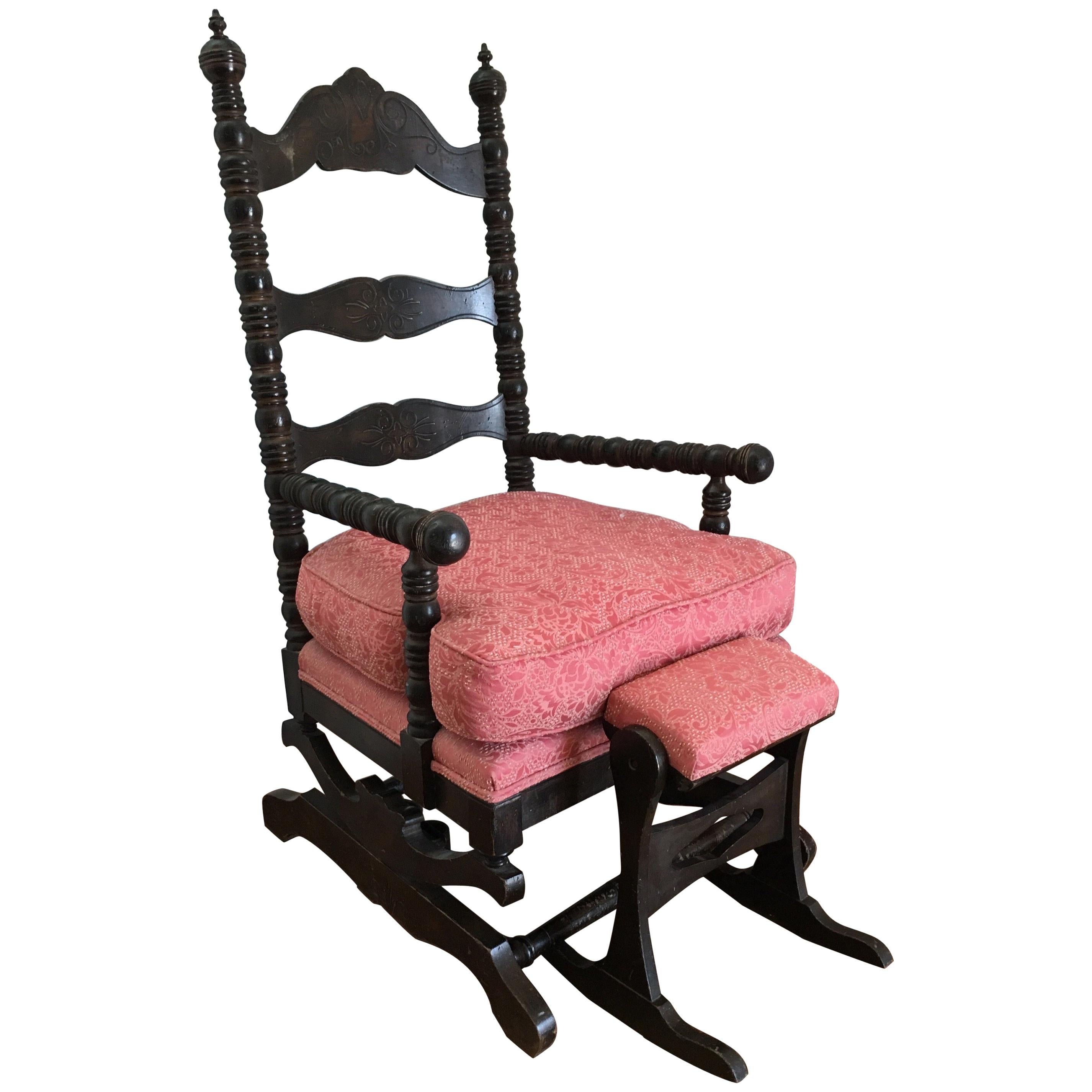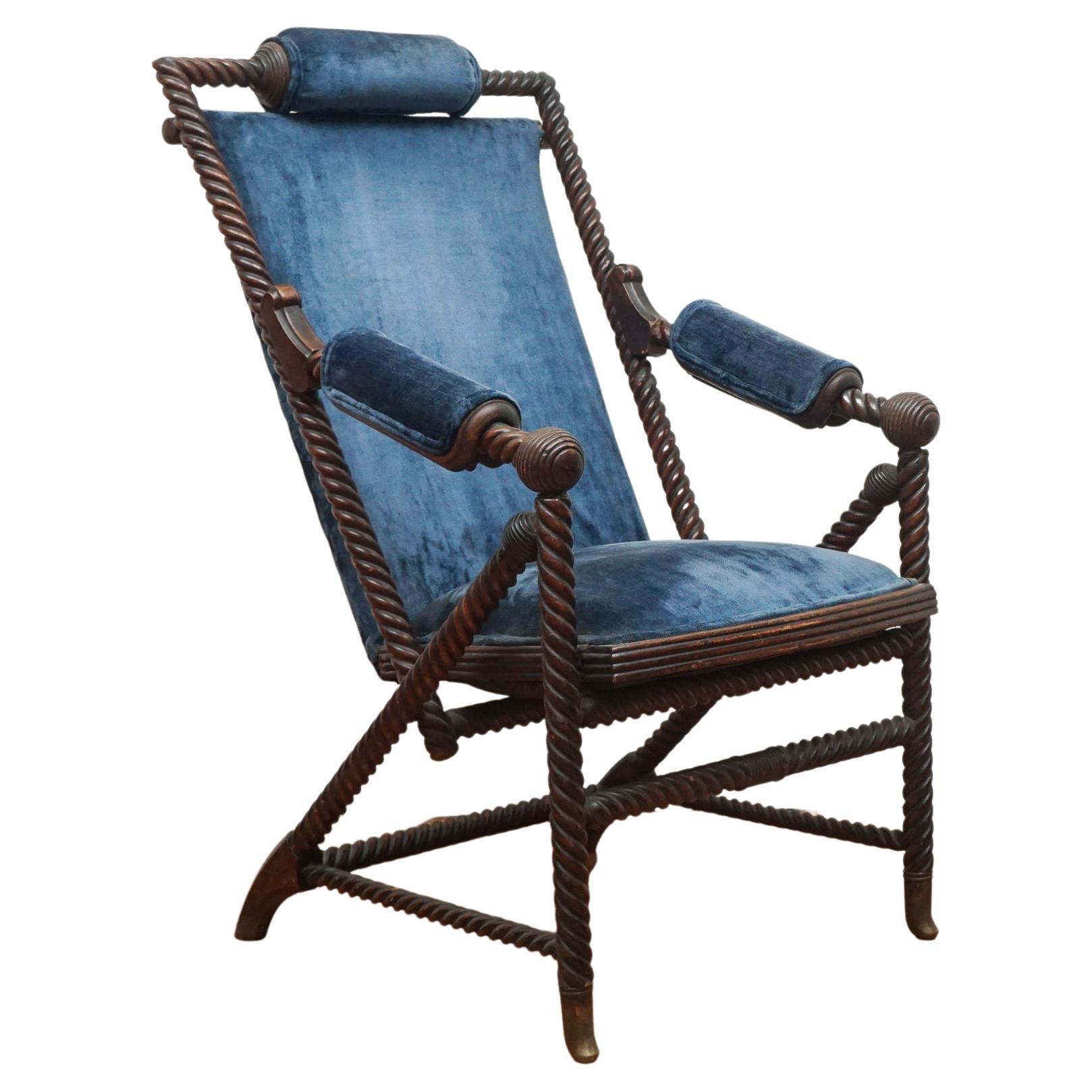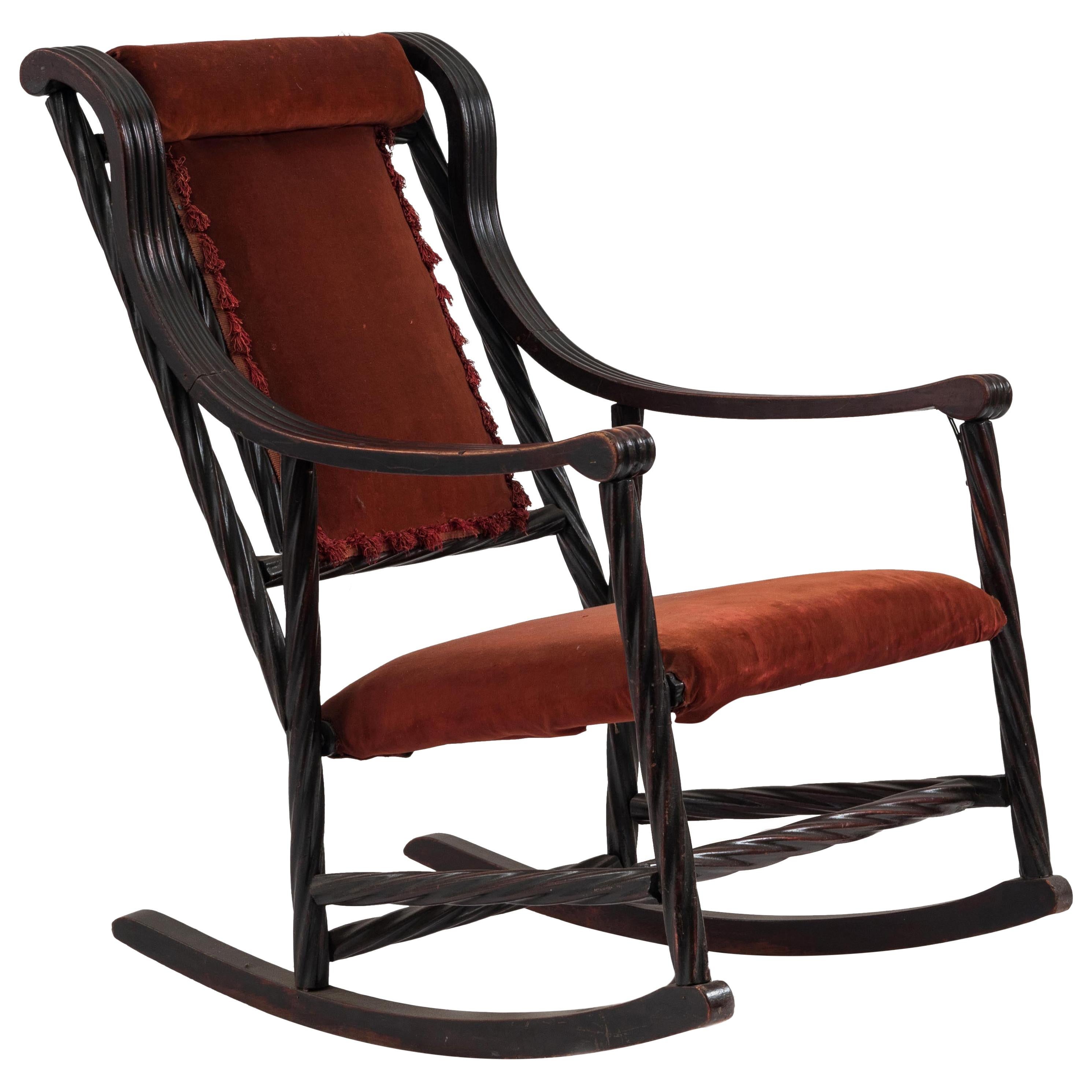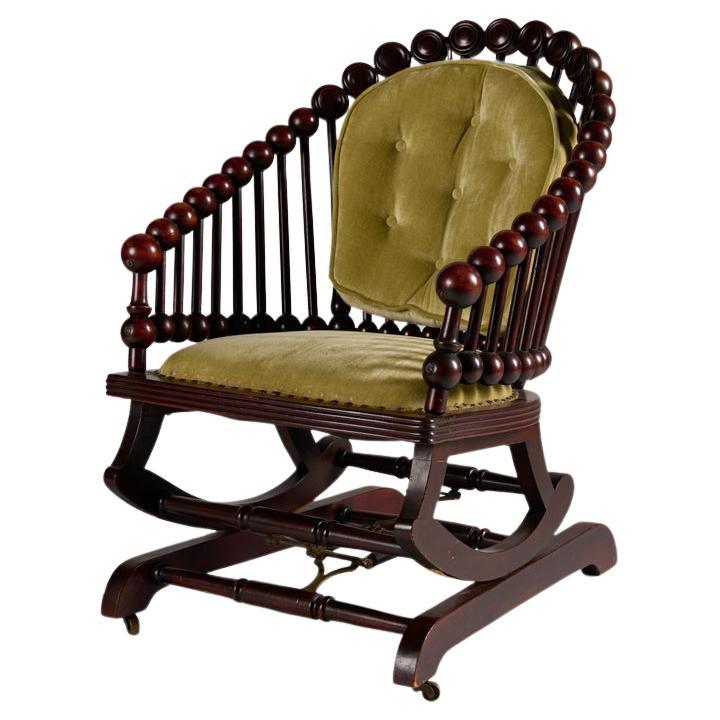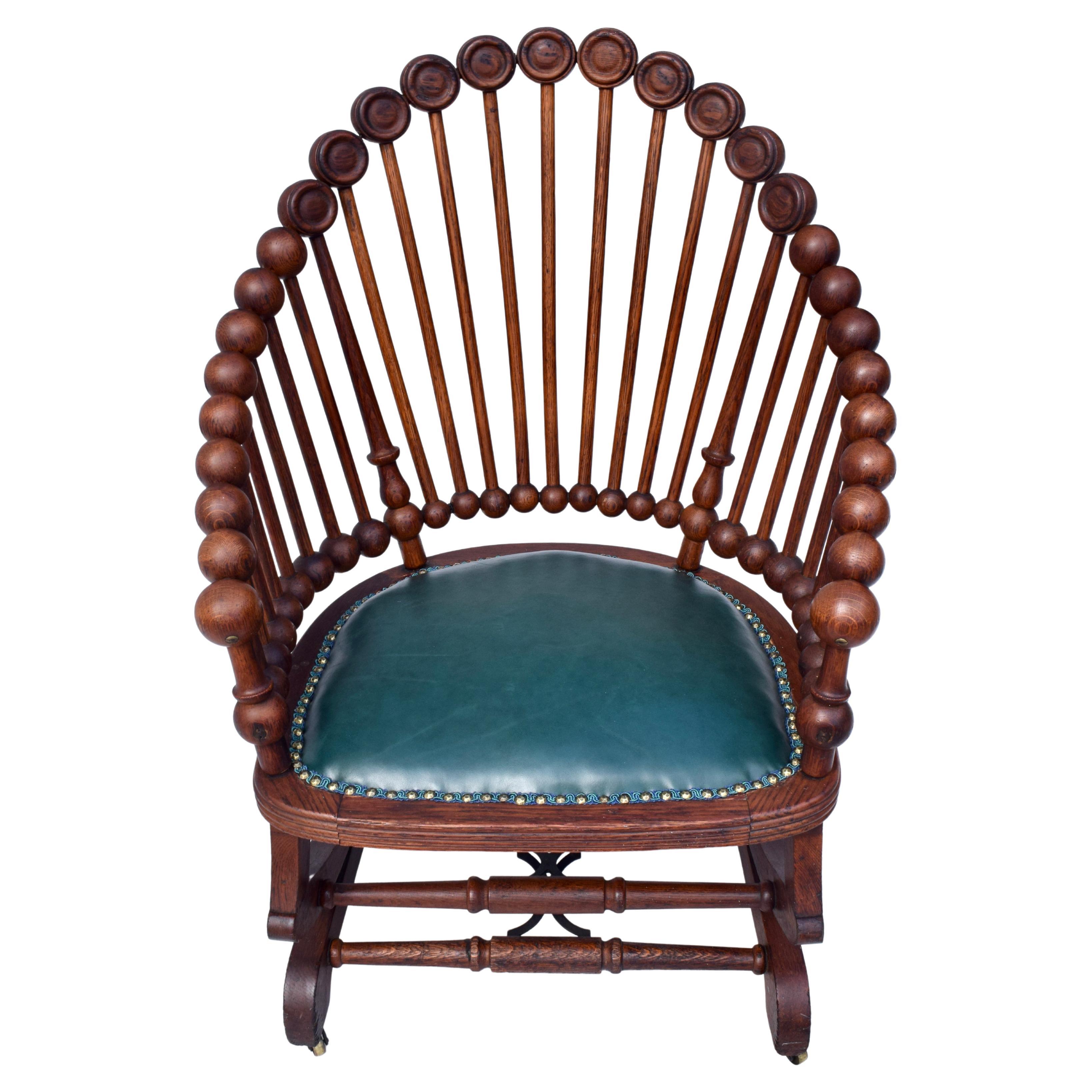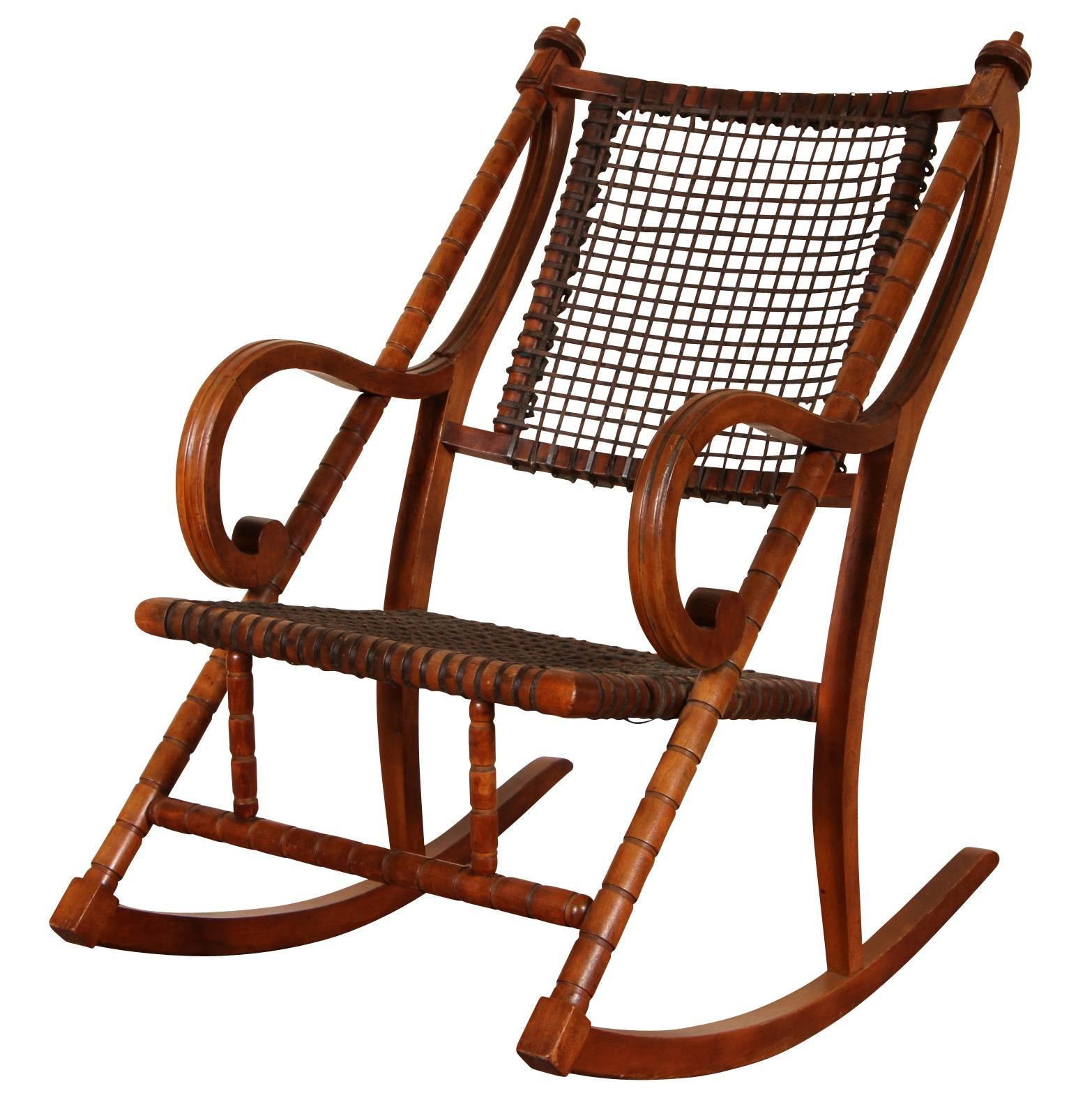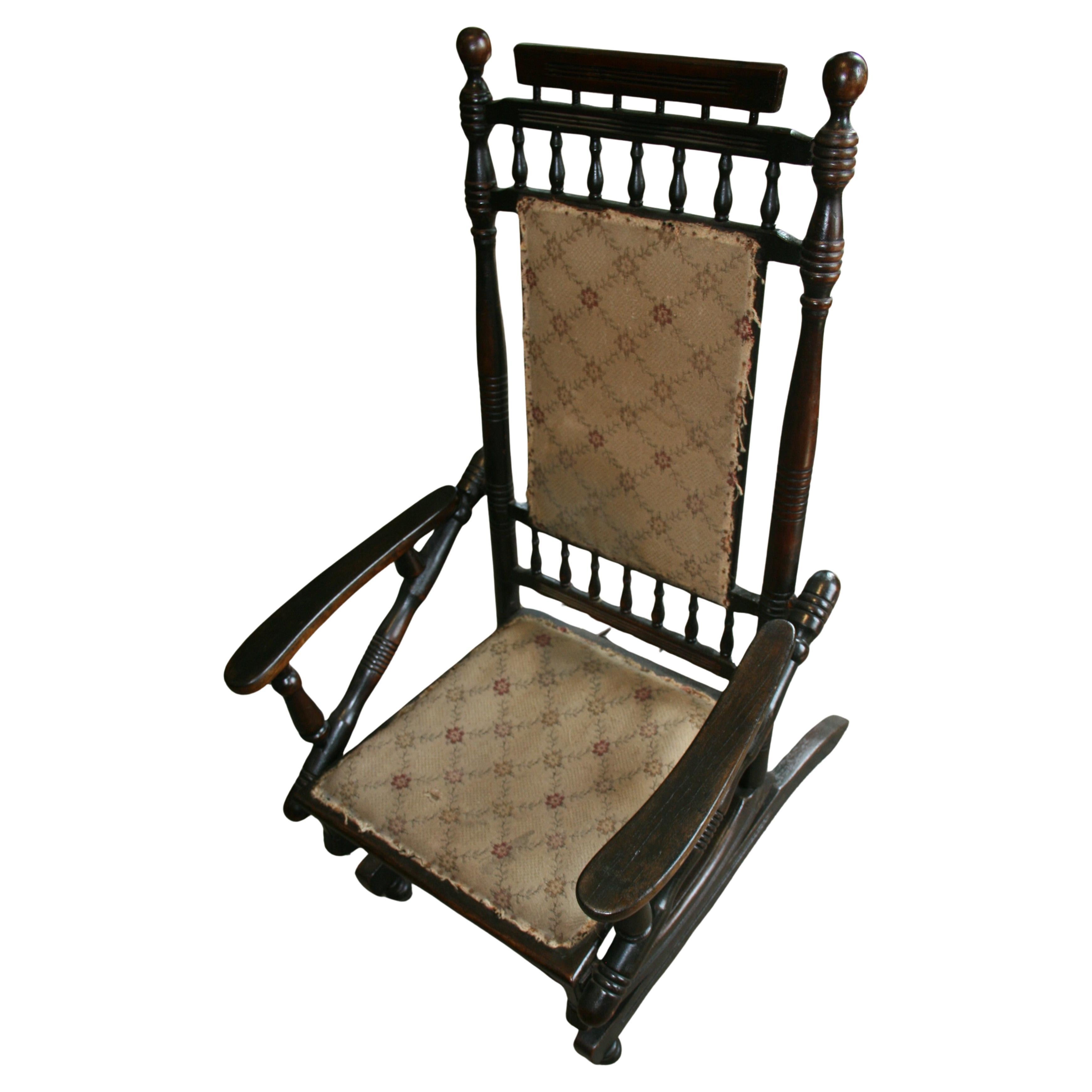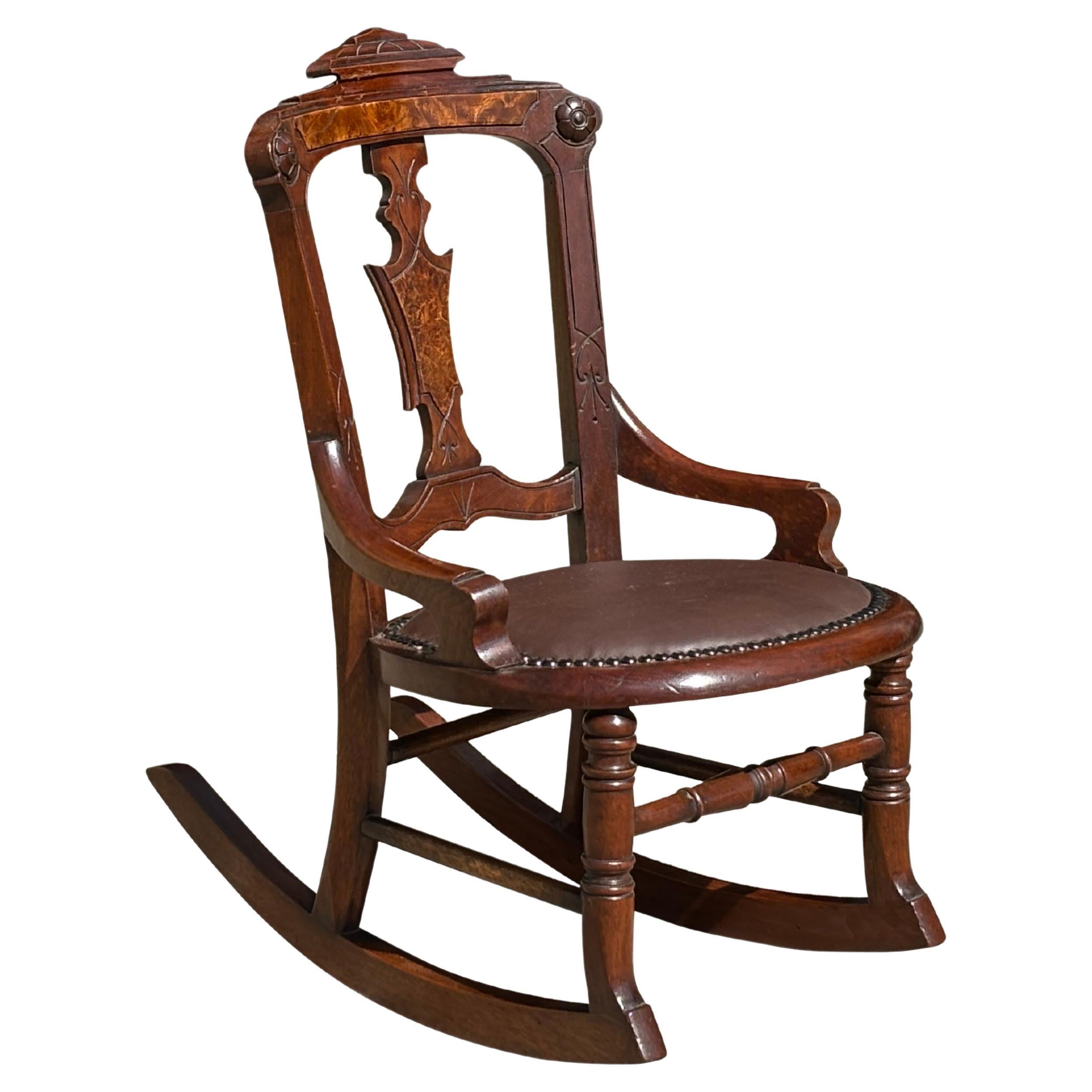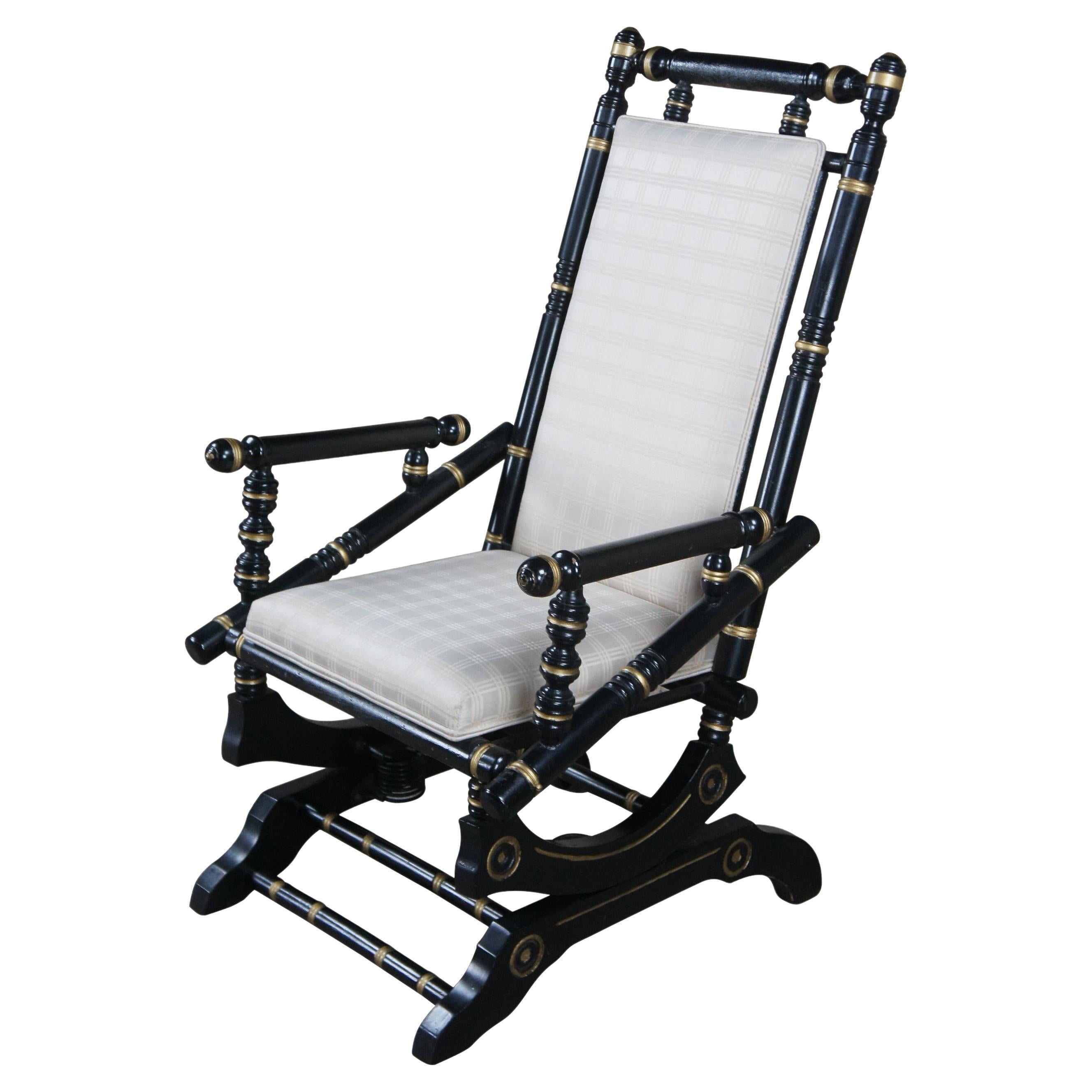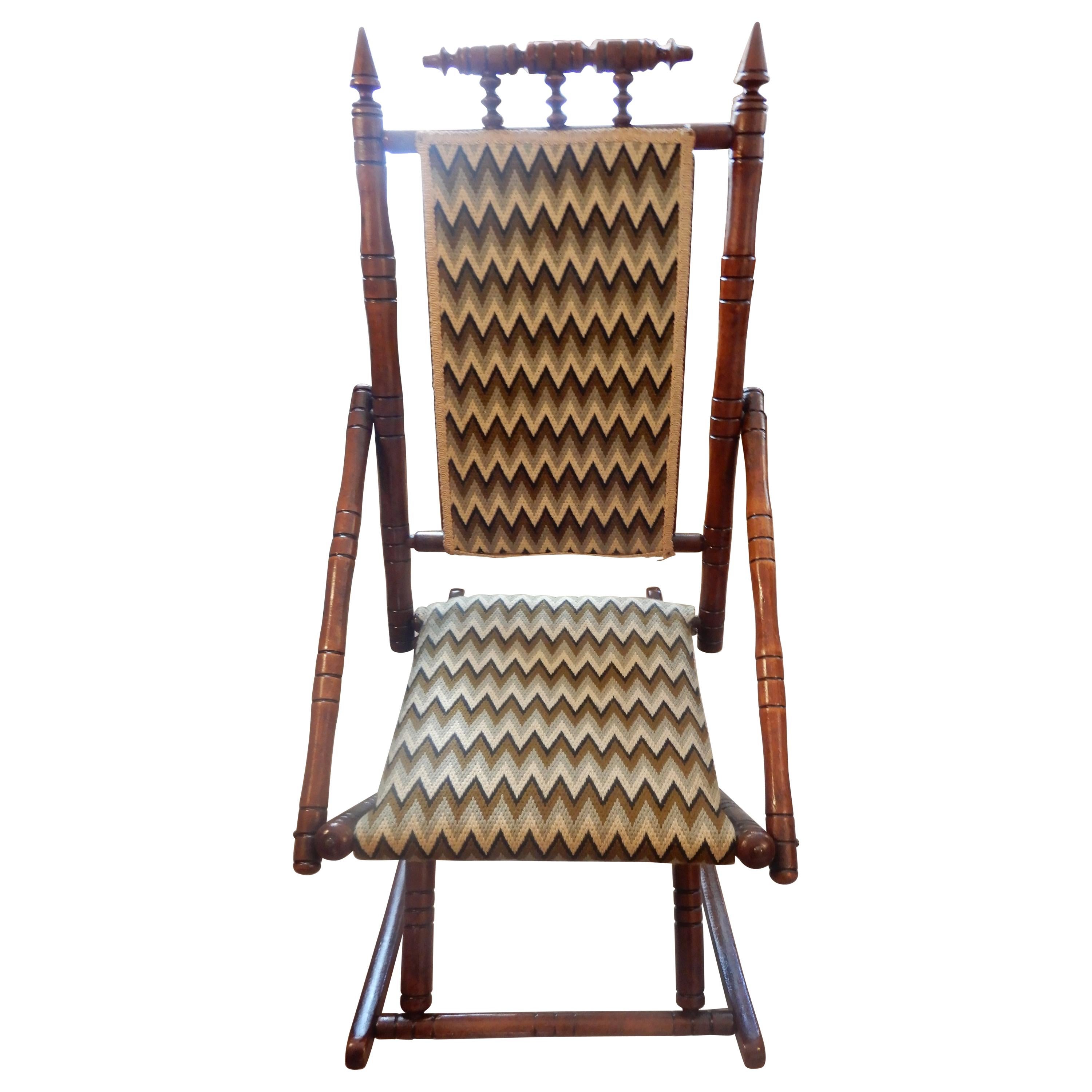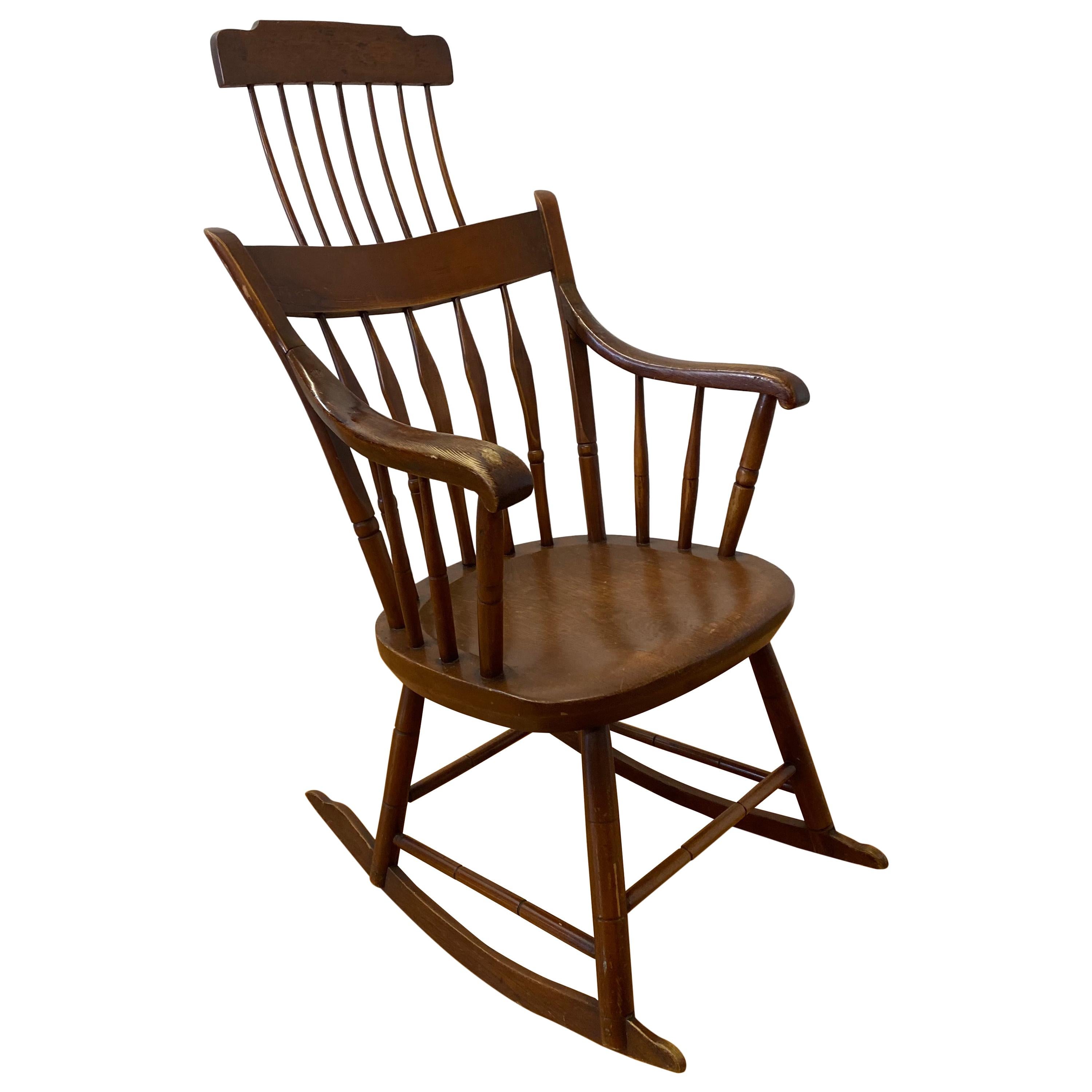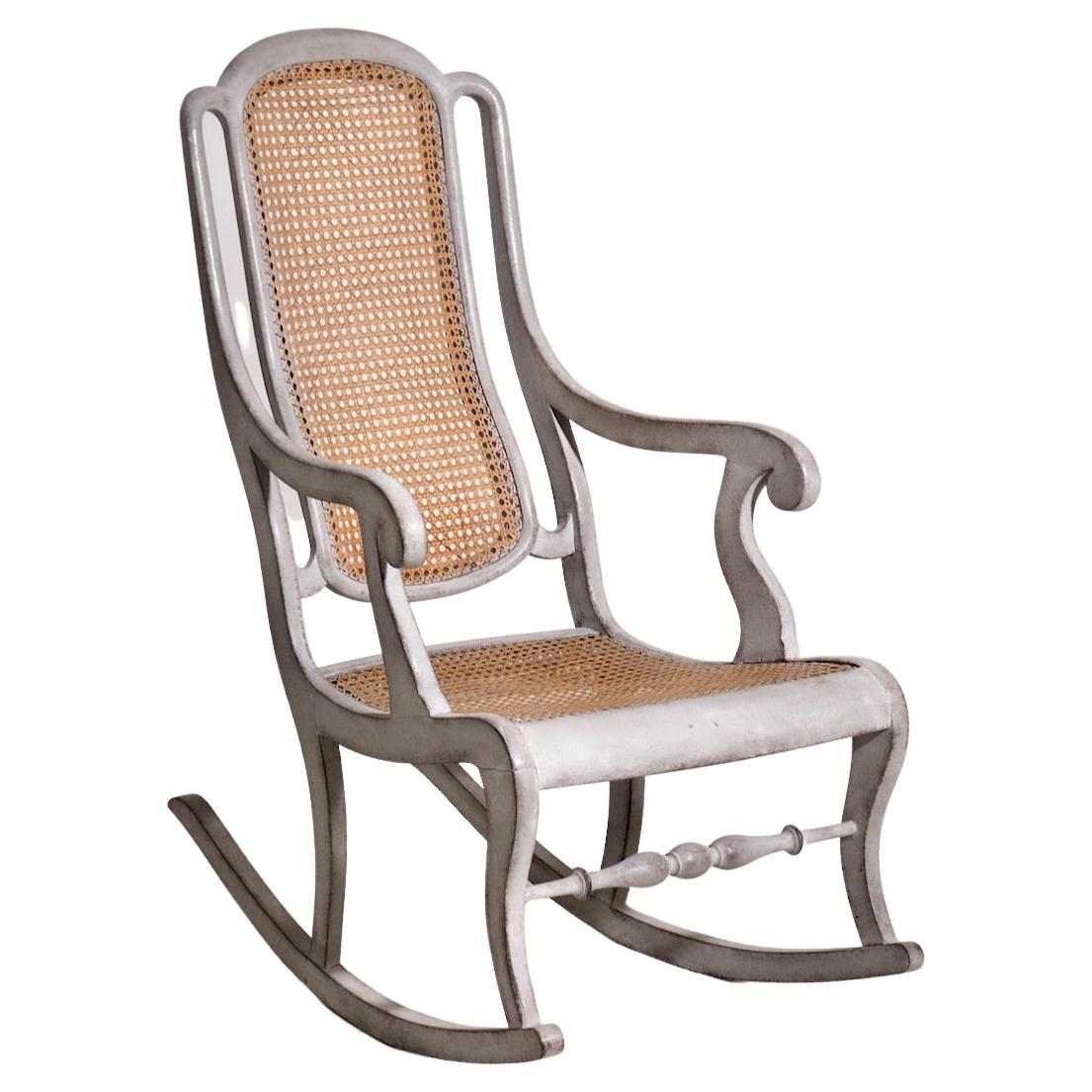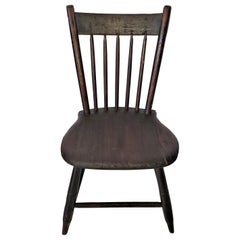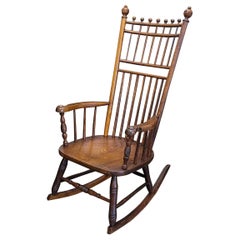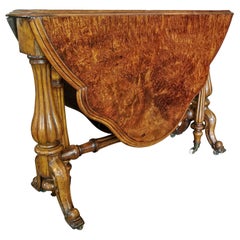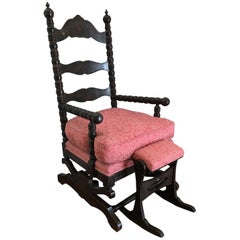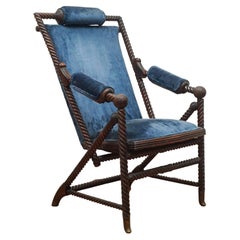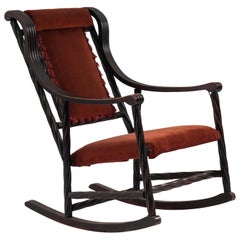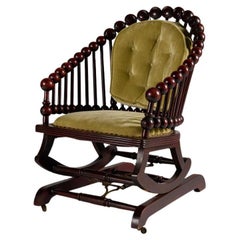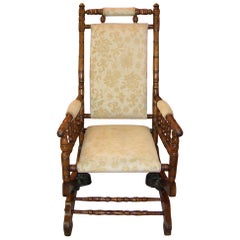
19th Centruy, American Hunzinger Style Walnut Platform Rocking Chair
View Similar Items
Want more images or videos?
Request additional images or videos from the seller
1 of 7
19th Centruy, American Hunzinger Style Walnut Platform Rocking Chair
Price:$480
About the Item
- Similar to:George Hunzinger (Cabinetmaker)
- Dimensions:Height: 41 in (104.14 cm)Width: 22 in (55.88 cm)Depth: 29 in (73.66 cm)Seat Height: 16 in (40.64 cm)
- Style:High Victorian (Of the Period)
- Materials and Techniques:
- Place of Origin:
- Period:
- Date of Manufacture:1870-1880
- Condition:Wear consistent with age and use. Upholstery might need updating to suit personal taste, but otherwise in very good condition.
- Seller Location:Dallas, TX
- Reference Number:1stDibs: LU3978112560941
About the Seller
4.9
Vetted Professional Seller
Every seller passes strict standards for authenticity and reliability
Established in 2015
1stDibs seller since 2018
390 sales on 1stDibs
Typical response time: 2 hours
Authenticity Guarantee
In the unlikely event there’s an issue with an item’s authenticity, contact us within 1 year for a full refund. DetailsMoney-Back Guarantee
If your item is not as described, is damaged in transit, or does not arrive, contact us within 7 days for a full refund. Details24-Hour Cancellation
You have a 24-hour grace period in which to reconsider your purchase, with no questions asked.Vetted Professional Sellers
Our world-class sellers must adhere to strict standards for service and quality, maintaining the integrity of our listings.Price-Match Guarantee
If you find that a seller listed the same item for a lower price elsewhere, we’ll match it.Trusted Global Delivery
Our best-in-class carrier network provides specialized shipping options worldwide, including custom delivery.More From This Seller
View All19th Century American Walnut Childs Chair with Provenance
Located in Dallas, TX
Presenting an absolutely stunning and historic 19th century American walnut childs chair belonging to Lida Calvert Hall 1867.
This Chair has impeccable provenance:
It is part o...
Category
Antique Mid-19th Century American American Craftsman Chairs
Materials
Walnut
Late 19C English Oak Spindle-back Ball Finial Rocker
Located in Dallas, TX
PRESENTING A LOVELY & RARE Late 19C English Oak Spindle-back Ball Finial Rocker.
Probably made in England or Scotland, circa 1880-90.
Made of oak wi...
Category
Antique Late 19th Century English Late Victorian Rocking Chairs
Materials
Oak
19th Century English Burl Walnut Sutherland Table
Located in Dallas, TX
Late 19th century English drop-leaf table from the Mid-Victorian Era.
Made of gorgeous yellowish-brown walnut with a fantastic burl walnut table top. The patina on the top is simply glorious!!
The table was made circa 1850-60.
It sits on beautifully turned fluted legs with the porcelain and brass casters.
Two of the legs swing inwards and outwards to extend the 2 leaves of the table.
Fully extended the table has a fabulous curved and indented edge, in an oval shape on both ends.
The center column is beautifully turned and fluted.
The 2 side columns are again beautifully turned and fluted and end with 2 extending scrolling supports that end in turned bulbous twin feet.
This is a high quality item and highly desirable!
Antique Sutherland Tables...
Category
Antique Mid-19th Century English High Victorian Side Tables
Materials
Walnut, Burl
19th Century Pair of Polish/German Stoneware Figures
Located in Dallas, TX
Presenting a lovely 19th century pair of Polish/German stoneware figures.
Quite rare!
Not a matching pair but similarly themed, with the little girl holding a basket of kittens with one kitten climbing up her front and the other of a little boy climbing a tree stump with a snail at the base.
The ‘Little Girl’ is painted stoneware or earthenware and we are of the opinion is Polish in origin (or possibly Russian). It does not have any identifiable markings but it was originally with another similar style figurine (not included in this sale) which had markings that we were of the opinion were Polish markings.
The ‘Little Boy’ is painted pottery and we are of the opinion that it is either Polish or German in origin. It is slightly different in style an texture to the girl and has a more ‘bisque’ finish. The facial features are more defined and remind me of German bisque dolls...
Category
Antique Late 19th Century Polish High Victorian Figurative Sculptures
Materials
Pottery
19th Century Irish Country Squire's Oak Telescopic Dining Table
Located in Dallas, TX
From circa 1860, five beautifully turned baluster legs on brass castors, beautiful oak patina on top with a high gloss finish.
It is very rare to find one of these made of solid oak...
Category
Antique Mid-19th Century Irish High Victorian Dining Room Tables
Materials
Oak
Rare 19th Century English Tunbridgeware Hair Pin or Slide
Located in Dallas, TX
PRESENTING an EXTREMELY UNIQUE and RARE 19C British Tunbridgeware Hair Pin/Bobbin or Slide.
This slide is unlike any of it’s kind we have seen before, it is a VERY RARE survivor.
From circa 1860 – 80 and made in Tunbridge Wells, England.
Made of walnut with gorgeous marquetry inlay on the entirety of the front with classic Tunbridgeware micro-mosaic all over the front. The rear is walnut.
The marquetry inlay appears to be various different woods, namely, maple, walnut and satinwood.
Would have been worn in a Lady’s hair bun with the micro-mosaic facing forward.
This would have belonged to a VERY ELEGANT LADY in the mid to late 19th Century.
Tunbridge ware is a form of decoratively inlaid woodwork, typically in the form of boxes, that is characteristic of Tonbridge and the spa town of Royal Tunbridge Wells in Kent in the 18th and 19th centuries. The decoration typically consists of a mosaic of many very small pieces of different coloured woods that form a pictorial vignette. Shaped rods and slivers of wood were first carefully glued together, then cut into many thin slices of identical pictorial veneer with a fine saw. Elaborately striped and feathered bandings for framing were pre-formed in a similar fashion.
There is a collection of Tunbridge ware in the Tunbridge Wells Museum and Art Gallery in Tunbridge Wells.
The famous makers of Tunbridge ware were in the Tunbridge Wells area of Kent; their most notable work was from circa 1830-1900.
Early makers of Tunbridge ware, in Tunbridge Wells in the mid-18th century, were the Burrows family, and Fenner and Co. In the 19th century, around 1830, James Burrows invented a technique of creating mosaics from wooden tesserae. Henry Hollamby, apprenticed to the Burrows family, set up on his own in 1842 and became an important manufacturer of Tunbridge ware, employing about 40 people.
Edmund Nye (1797–1863) and his father took over the Fenner company when William Fenner retired in 1840, after 30 years in partnership with him. Thomas Barton (1819–1903), previously apprenticed at the Wise factory, joined the Nyes in 1836, and worked as Nye’s designer; he took over the business in 1863 and continued there until his death.
In Tonbridge (near to Tunbridge Wells), George Wise (1703–1779) is known to have had a business in 1746. It continued with his son Thomas, and Thomas’s nephew George (1779–1869), who took over in 1806. In its early years the company made articles such as workboxes and tea caddies with prints of popular views; later items had pictures created from mosaics. Their workshop in Tonbridge, Wise’s Tunbridge Ware Manufactory, was next to the Big Bridge over the Medway; the building was demolished in 1886 to widen the approach to the bridge.
Tunbridge ware became popular with visitors to the spa town of Tunbridge Wells, who bought them as souvenirs and gifts. Articles included cribbage boards, paperweights, writing slopes, snuffboxes and glove boxes.
At the Great Exhibition of 1851, Tunbridge ware by Edmund Nye, Robert Russell and Henry Hollamby was shown; Edmund Nye received a commendation from the judges for his work. He exhibited a table depicting a mosaic of a ship at sea; 110,800 tesserae were used in making the picture.
The manufacturers of Tunbridge ware were cottage industries, and they were no more than nine in Tunbridge Wells and one in Tonbridge. The number declined in the 1880s; competent craftsmen were hard to find, and public tastes changed. After the death of Thomas Barton in 1903 the only surviving firm was Boyce, Brown and Kemp, which closed in 1927.
Marquetry was an old technique which was continued by Nye and Barton to create images such as birds or butterflies.
‘Green Oak’ as caused by the fungus Chlorociboria aeruginascens.
Stickware and half-square mosaic was invented by James Burrows in about 1830: a bunch of wooden sticks of different colours, each having triangular or diamond-shaped cross section, were tightly glued together; in the case of stickware, the resulting block was dried, then turned to form an article such as the base of a pincushion. For half-square mosaic, thin slices were taken from the composite block, and applied to a surface.
Tesselated mosaic, was a development by James Burrows of half-square mosaic; it was adopted by George Wise and Edmund Nye. Minute tesserae were used to form a wide variety of geometric and pictorial designs.
Many sorts of wood were used for the various colours; about 40 were in regular use. Only natural colors were used; green was provided by “green oak”, produced by the action of fungus on fallen oak. Designs for articles were often taken from designs of Berlin wool work.
Category
Antique Late 19th Century English High Victorian Collectible Jewelry
Materials
Satinwood, Walnut
You May Also Like
19th Century American Platform Rocker with Footstool by George Hunzinger
By George Hunzinger
Located in Southampton, NY
Rare George Hunzinger solid dark walnut platform rocker with new upholstery. Back seat cushion was custom made more recently to fit the back.
George ...
Category
Antique Late 19th Century American Rocking Chairs
Materials
Wood
Hunzinger Victorian Rocking Chair
By George Hunzinger
Located in Hudson, NY
The Victorian arm chair, shown here, was made by German designer George Hunzinger in the late 19th century. While it is reflective of the ornate fu...
Category
Antique Late 19th Century American Victorian Rocking Chairs
Materials
Upholstery, Wood, Beech
Attributed to Hunzinger American Victorian Red Velvet Rocking Chair
By George Hunzinger
Located in Queens, NY
American Victorian walnut swirl design rocking chair with red velvet seat and back. (att: Hunzinger).
Category
Antique 19th Century American Victorian Rocking Chairs
Materials
Fabric, Upholstery, Velvet, Wood, Walnut
George Hunzinger, Lollipop Platform Rocking Chair, United States, circa 1880
By George Hunzinger
Located in New York, NY
An innovative cabinet maker, George Hunzinger was born in Tuttlingen, Germany, to a family of furniture makers dating back to the 17th century. After immigrating to America he establ...
Category
Antique 1880s American Rocking Chairs
Materials
Upholstery, Wood
19th Century Lollipop Platform Rocking Chair by George Hunzinger
By George Hunzinger
Located in Southampton, NJ
An outstanding Lollipop platform rocker in carved Oak by George Hunzinger late 19th c. production. The iconic patented Huntzinger steel and spring rocking mechanism is perfectly in t...
Category
Antique 1880s American Victorian Windsor Chairs
Materials
Brass, Steel
Rare George Hunzinger Rocking Chair with Patented Steel Webbing, 1869
By George Hunzinger
Located in Bridgeport, CT
Fine form with one broken strap and geometric moulding at upper right missing. The back with the wire webbing flanked by bamboo form frame, and bold swirled arms with inverted trumpe...
Category
Antique 19th Century American American Craftsman Rocking Chairs
Materials
Wood
Recently Viewed
View AllMore Ways To Browse
19th Century Victorian Rocking Chair
Antique Victorian Rockers
Spring Rocker
Platform Rocking Chair
Antique Hunzinger Furniture
Platform Rockers
Antique Platform Rocker Chair
Antique Platform Rocker
Victorian Platform Rocker Antique
Victorian Platform Rocker
Hunzinger Rocker
Hunzinger Platform Rocker
1960s Rocking Chair
Hand Crafted Rocking Chair
Danish Teak Office Chair
Antique Rocking Chair
Danish Modern Rocking Chair
Rocking Chair With Cushion
